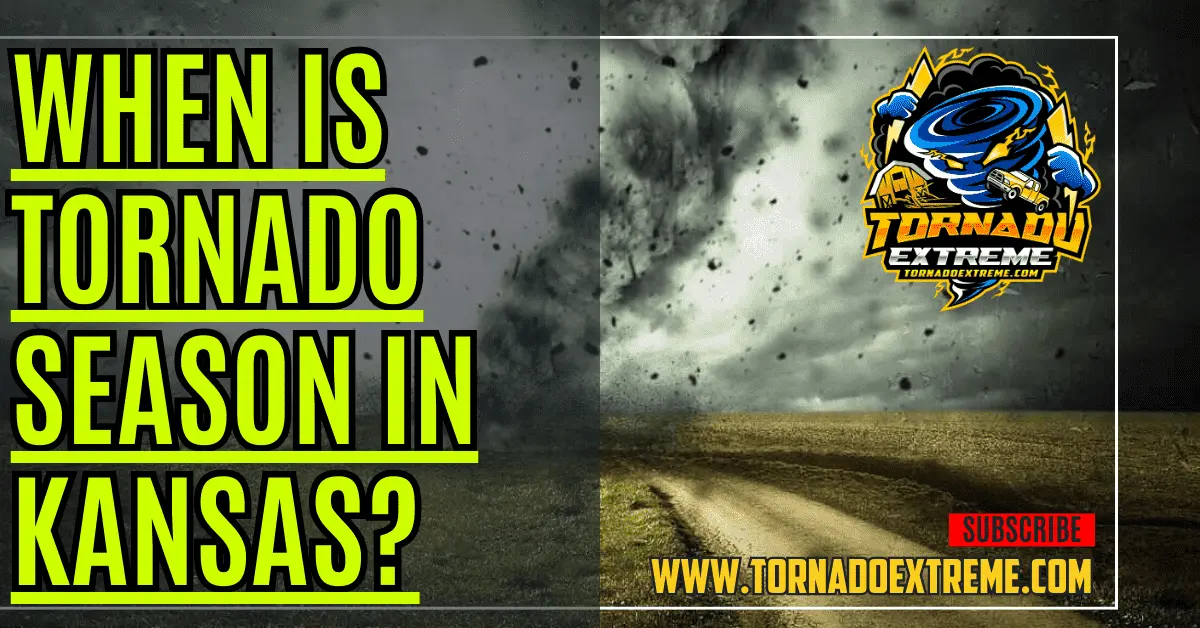Introduction – When is Tornado Season in Kansas?
Oh, tornado season in Kansas. It’s a time of year that is both fascinating and anxiety-inducing for many people. The state is known for its violent twisters, so it’s no wonder residents keep their eyes peeled and ears perked up during peak season.
Tornado season in Kansas typically falls between the months of April and June. Of course, you can never be too sure when these things will hit, as they can strike at any time throughout the year. But this particular period sees a higher concentration and frequency of them.
Incredibly, there are an average of 96 tornadoes reported each year during this span. However, keep in mind that number is just an average and can vary greatly from one year to another. As we’ve all seen too many times before on the news, these destructive storms know no limits.
Understanding the concept of tornado season in Kansas
Tornado season – it’s a captivating topic. The way many folks discuss it, you’d think that there was only one storm per year. So what is this precarious time?
Many people automatically assume this treacherous period occurs during the summer months, however they can actually happen at any time of the year in Kansas. But, there are certain months where the state tends to see more. The peak of tornado season is from April to June; springtime. During these three months warm moist air from the Gulf of Mexico meets cold dry air from Canada which creates an ideal environment for strong storms and twisting winds.
It’s not enough to know when tornado season takes place; it’s also important to comprehend why. To understand why they occur we have to delve deeper into their nature and figure out what makes them tick – or twist rather. Tornadoes rely on instability and strong wind shear conditions which appear most often in Kanas during late spring because of temperature shifts and jet stream patterns changing frequently. In addition to those factors, center of America, including Kansas itself lies within an area referred to as Tornado Alley where an abnormally high amount of twisters touch down annually.
Learning about this dangerous yet interesting topic is crucial for staying safe and prepared for anything Mother Nature throws at us. We will always be on the lookout, but we must remain especially vigilant during these key months every single year if we want our loved ones and ourselves to stay safe.
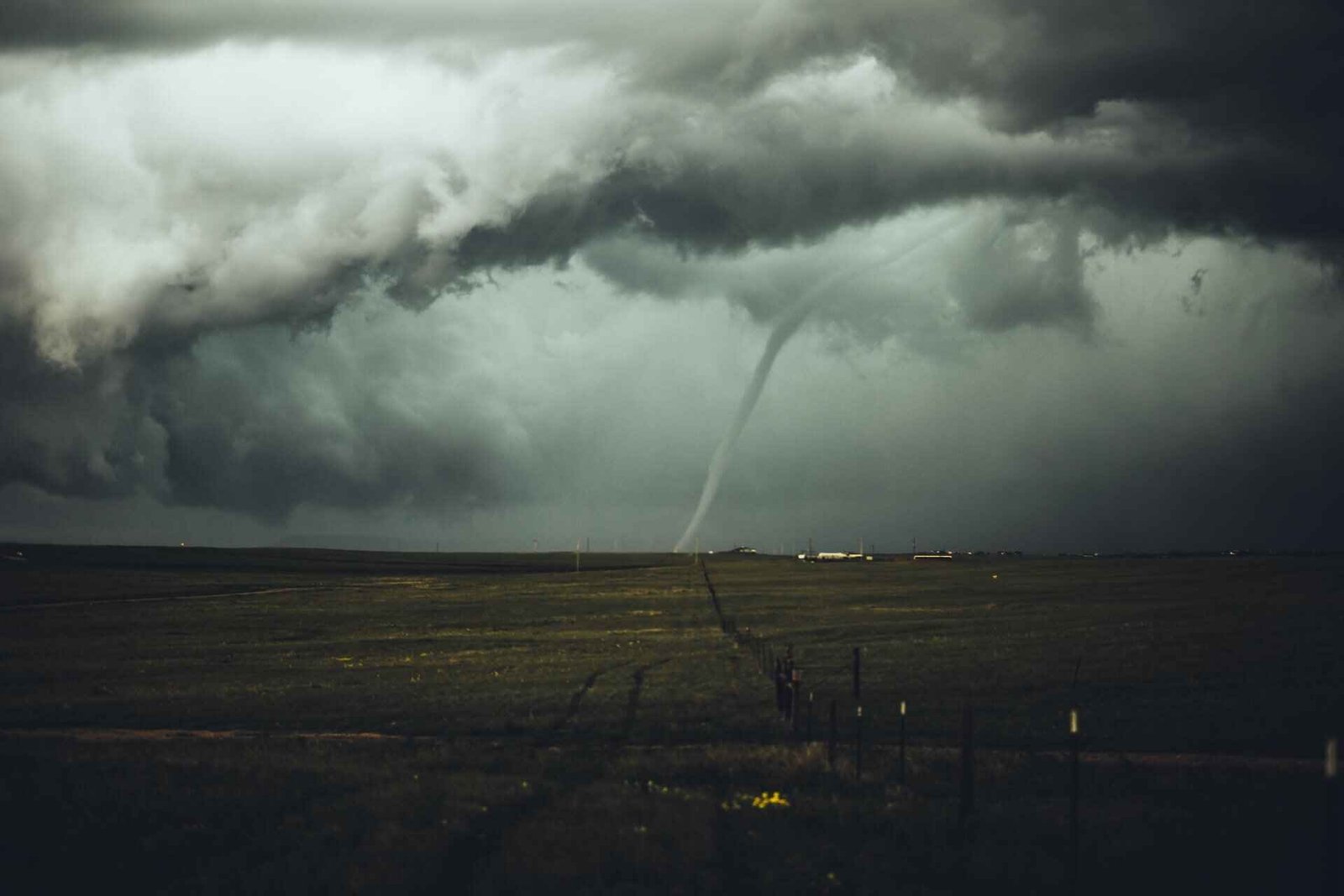
Factors that contribute to tornado activity in Kansas
Experts say several other factors come into play when trying to understand how tornadoes form and behave:
– Temperature gradients: Sharp temperature differences between regions increase atmospheric instability.
– Wind patterns: Strong wind shear (a difference in wind speed or direction over a short distance) within storm systems provides necessary rotation.
– Atmospheric instability: Many cloud layers stacked on top of each other create a very unstable and volatile environment.
– Drylines: The boundary between dry desert air and moist gulf air often serves as the trigger for thunderstorm development.
– Jet streams: High-altitude winds can also greatly affect weather patterns on the surface.
By comprehending all these various causes, meteorologists are better equipped to predict when and where tornadoes will strike. And by understanding them as well, you can be better prepared mentally and physically in case one ever comes your way.
It’s no secret that Kansas is home to a lot of tornadoes. The state has more twisters than any other in the country, thanks to the convergence of several factors. One of them is geography: Kansas is situated at the crossroads where warm, moist air from the Gulf of Mexico meets cool, dry air from Canada. When these two different types of air collide, they create powerful updrafts that generate severe thunderstorms and tornadoes.
Another factor contributing to Kansas’ high twister count is its landscape — or lack thereof. The state is mostly flat and wide open, allowing winds to flow freely across its surface. This makes for ideal conditions for supercell thunderstorms to form. These storms are characterized by rotating updrafts that can give way to tornadoes when conditions are right.
Finally, there’s Tornado Alley itself. Stretching from Texas through Oklahoma, Kansas and Nebraska, this region sees a combination of atmospheric conditions that make it particularly prone to tornadic events. For example, moist and dry air streams often collide here in ways that make the atmosphere highly unstable and conducive to intense thunderstorm activity.
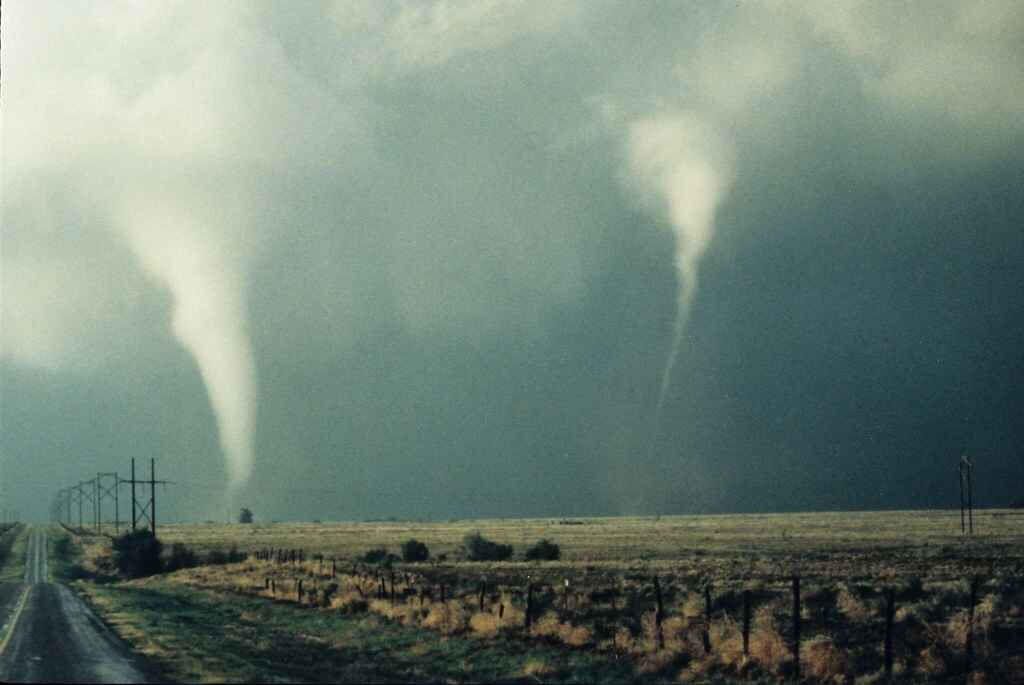
The role of Tornado Alley in tornado season in Kansas
Tornado Alley — which includes Kansas — boasts one of the world’s most active tornado seasons due largely to unique geographical features and meteorological dynamics present in this central U.S. region. Stretching between Texas and Nebraska, Tornado Alley experiences frequent bouts of severe storms with strong winds, which make ideal conditions for tornado formation.
A primary contributing factor behind heightened tornado activity found throughout Tornado Alley lies within North America’s Great Plains terrain itself. Its flat landscape allows for warm moist air from the Gulf of Mexico to collide with cool dry Canadian air masses; these collisions initiate massive thunderstorms as well as tornado development when favorable atmospheric circumstances align. Moreover because this region also serves as a crossroad where multiple weather systems frequently interact with each other, this further raises the chances of severe weather situations.
Kansas’ positioning right in the middle of Tornado Alley contributes to its prevalence and frequency of tornados compared to other states in the country. The state sits in the heart of this area with a high concentration of twisters which is why it experiences more frequent and intense tornadoes than other locations regionally or nationally. Thanks to a combination of ideal topography and atmospheric characteristics, tornado activities reach their peak during specific seasons throughout the year.
All things considered, there is no doubt that Tornado Alley plays a significant role in determining Kansas’ tornado season because it lies within North America’s Great Plains along with its propensity for atmospheric collisions. This convergence zone provides an environment for powerful storms that often spawn destructive tornadoes within Kansas.
Kansas Tornadoes per Year
When people think about Kansas, one of the first things they associate with the state is probably tornadoes. Its flat terrain combined with its location make Kansas a hotbed for twister activity — hence why it’s home to Tornado Alley. Although twisters can form at any time of year, there are certain months when they’re much more likely to touch down. On average, there are roughly 80 twisters each year in Kansas, and most tend to form in May.
Tornadoes are a common occurrence in Kansas due to various factors. For starters, the warm moist air from the Gulf of Mexico often clashes with drier air traveling from Canada, making for severe thunderstorms and supercell development. Furthermore, the state’s geography is built for storms to pass through it. The flat, open plains have nothing blocking their path, and thanks to that these storms can quickly turn into fatal tornadic systems.
There is a common misconception that tornadoes mainly impact rural areas or farmland, but they have been known to affect urban centers as well. Wichita and Topeka are cities that have seen devastating twisters over the years. This serves as a reminder for all Kansans to always be prepared during tornado season and have an emergency plan in place regardless of where they live in the state. Although unpredictable, one must stay informed and ready when living in Tornado Alley.

Kansas Tornadoes by Month
Kansas has earned itself its nickname of Tornado Alley because it experiences them year-round. However not every month poses the same risk; some months see more than others. For example in April Kansas sees some of its most powerful tornadoes with average wind speeds exceeding 200 mph! May also has high-risk months with continuous outbreaks of severe storms. On the other hand June brings a decrease in tornadic activity as summer moves along.
But here is something interesting: July tends to be a very quiet month for tornados! The environment stabilizes then making it very difficult for twister ingredients to appear at once. There may still be random ones here and there but typically they won’t occur as frequently or even at all. However August marks another spike in tornados due to more favorable weather patterns returning again.
The severe fluctuation in twister occurrence highlights how fickle Kansas’ weather is throughout the year, thus keeping residents on their toes constantly prepared.
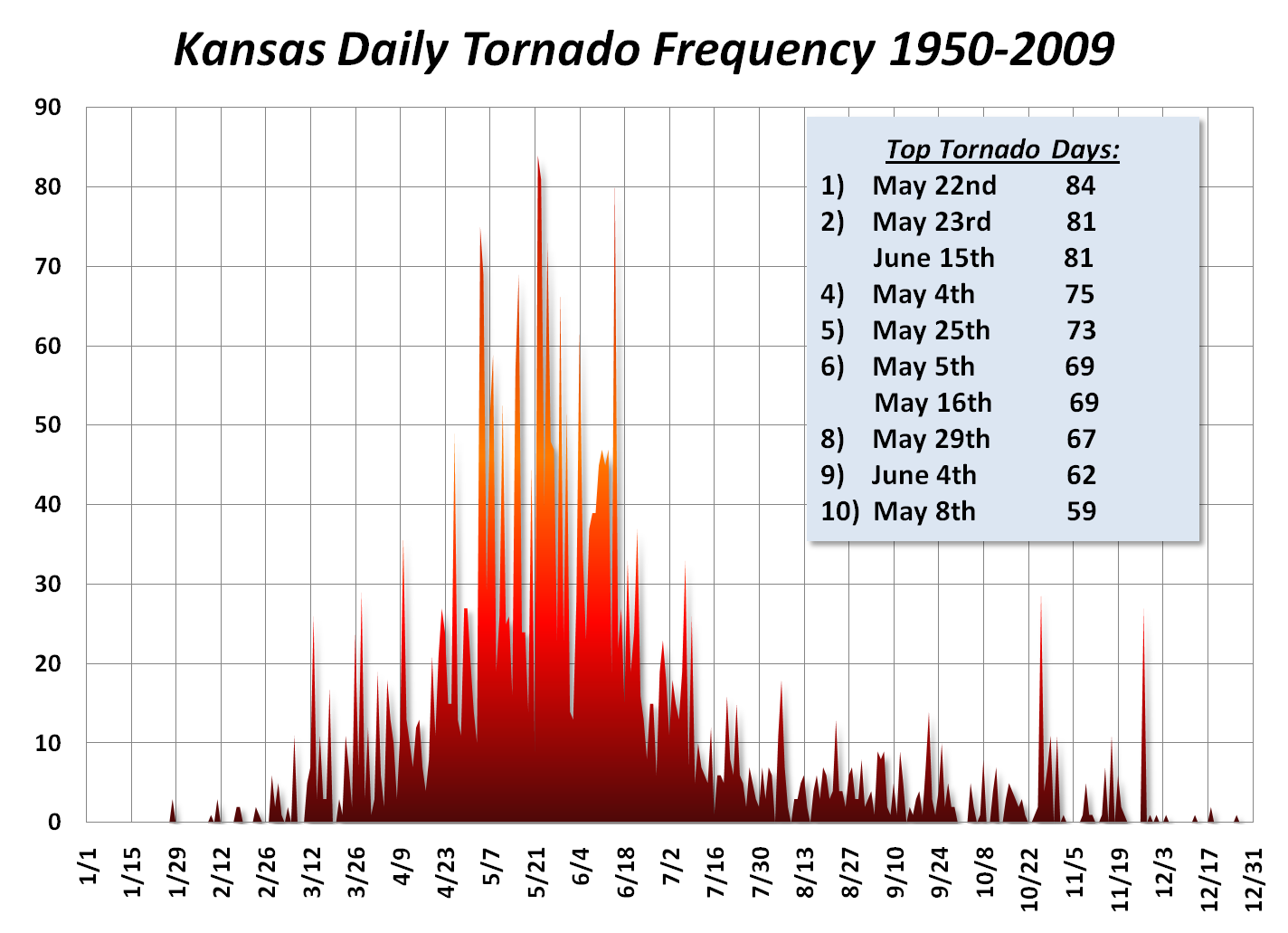
Largest Tornadoes to Strike Kansas
This state has seen some of the largest and most destructive tornadoes throughout history. One of those tornadoes occurred on May 4th, 2007 in a town called Greensburg. The EF5 twister was nearly two miles wide and had winds that reached a speed of 205 mph. The town was practically wiped off the map. However, this disaster did awaken a sense of resilience within the residents of Greensburg as they rebuilt everything from scratch.
Another unforgettable tornado hit Kansas on May 10th, 2016 near Chapman. An EF4 with winds estimated at 180 mph destroyed communities along its path. Even though it caused severe damage, there were no fatalities since early warnings from meteorologists gave people enough time to find shelter.
These monsterous tornadoes emphasize just how powerful Mother Nature is but also how strong Kansans can be when they come together.
1 May 25, 1917
Kansans will never forget the day that nine different tornados touched down all across their state in 1917. It remains one of the deadliest outbreaks in their history and everyone experienced first-hand just how powerful these storms can be.
One specific twister that stands out is called Forney-Ozark Tornado which formed near Forney and gained strength as it moved across the landscape. With wind speeds over 200 mph this massive half-mile wide twister took out everything in its path before finally fizzling out after traveling almost two hundred miles away.
May 25th serves as a chilling reminder for Kansans to stay cautious during tornado season and listen to any warnings issued by meteorologists.
2 April 29, 1942
A tremendous storm struck Kansas on April 29th,1942 causing widespread destruction everywhere it went.. What makes this natural disaster stand out more than the rest is that it happened in April – a time when tornadoes are typically much less common. Experts have investigated and concluded that the odd occurrence was due to some strange weather patterns and atmospheric conditions.
The April 29 tornado is a reminder that while scientific advancements have made us better equipped to predict these events, what we don’t know will always be our biggest concern. That’s why it’s important to be prepared year-round and not just when the weather report tells you to. This tornado was also another way for experts to study and gather more data about them, which in turn helps us make more accurate predictions in the future.
3 April 26, 1991
On this day back in 1991, Kansas experienced one of its most devastating tornado outbreaks ever recorded. Multiple large twisters touched down across many parts of the state, but none were as tragic as the one that struck Andover. It’s still considered one of the strongest twisters ever recorded worldwide because of how wide it was (one mile) and how long it stayed on the ground (40 miles). The town suffered significant damage and loss of life because of this monstrous EF5 tornado.
April 26th serves as a somber reminder that despite all our technological advances over the years, we still have a long way to go before being able to accurately predict how powerful each storm will be. Even today scientists are studying those storms new ways on how to protect people from such disasters.
4 June 8, 1966
Kansas saw one of its most fatal tornado outbreaks in history on June 8th, 1966. Supercell thunderstorms spanned across entire plains early in the morning creating several powerful twisters back-to-back with no break in between each touchdown spot. The capital city took heavy damages that day due to an F5 twister cutting through everything blocking its path; unfortunately some weren’t able to make it out alive due this violent twister spawning into existence so close by
The 1966 tornado outbreak reminds us of the destructive nature of these wind tunnels. It also shows how important it is to be prepared and have warning systems in place so people can get away from these deadly events. With improvements in technology since 1966, people are more aware than ever now and better equipped to anticipate a storm or tornado coming their way. Although June 8th is a day that many would want to forget, it’s also a reminder of nature’s power.
One thing Kansans have learned over the years is that you can’t let your guard down during the storm seasons. They’ve been hit with hundreds of powerful storms and always managed to build back up afterward.
5 May 20, 1957
May 20, 1957 is a day residents of Kansas will never forget. A powerful tornado ripped through the state on this day and caused mass destruction as well as loss for many families that lived there. The Ruskin Heights tornado was one of the deadliest twisters in Kansas’ history.
With winds reaching up to 200 mph, this EF5 twister destroyed everything within its path which covered six miles long and half a mile wide. Entire neighborhoods were wiped off the face of the earth leaving nothing but rubble behind. 40+ people lost their lives that day while hundreds were injured by this violent force.
Changes were made after tragedy struck that year though in an attempt to prevent anything like this from happening again such as revising building codes to withstand stronger forces and creating safe havens for people during dangerous weather conditions.
May 20th will forever live on in memory for those who saw first hand what kind of damage the Ruskin Heights tornado did.
6 May 4, 2007
That spring Kansas had one hell of an outbreak on May fourth when multiple large and violent monsters touched down across central parts of the state. Even though they were forecasted by meteorologists, no one could have expected these deadly twisters would form with such destruction in their wake. Some of the highest wind speeds ever recorded in Kansas were from this storm.
The small town of Greensburg was hit very hard that day when an EF5 cyclone moved through it leaving nothing but a ghost town. The highest rating on the Enhanced Fujita scale, this beast covered everything with winds moving more than 200 mph. Debris was scattered for miles around as buildings were wiped out.
Everyone in Tornado Alley knows there’s nothing that can save you once one of these monsters comes your way but it’s important to be ready and aware so people can take cover when they know danger is coming.
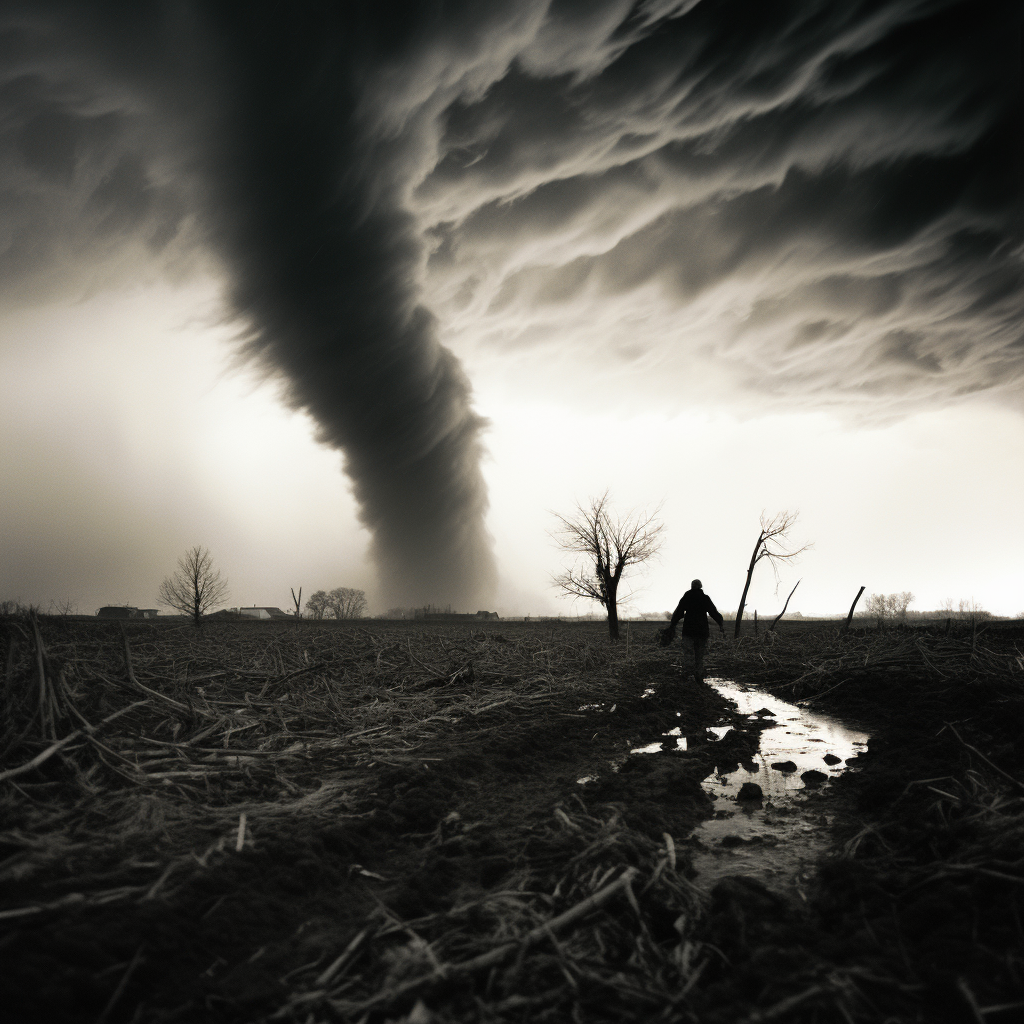
The Tornado Warning System in Kansas
When it comes to being prepped for a severe twist of fate, Kansas is quite ahead of the game. The Tornado Warning System in Kansas has proven itself time and time again as one of the most advanced tornado warning systems in the United States. And some would argue that this is a necessity for a place where wide, open prairies meet unpredictable weather patterns.
One feature that sets them apart from others is their smartphone integration with meteorology predictions. In recent years, various smartphone apps have been developed to give real-time updates on tornado warnings. These apps will use your GPS location to alert you if a twister is heading your way or not. Getting an early warning won’t mean much if you don’t have enough time to do anything about it. So these alerts allow residents to pack up and get out while they can.
But I must say that my favorite aspect of their system is how they encourage collaboration between different weather experts. By working closely with meteorologists from local news stations and national weather agencies data can be shared at lightning speed (no pun intended). This allows experts the ability to issue precise warnings tailored to specific areas at risk. We all know tornados are chaotic beings; they’ll destroy anything they please without rhyme or reason. But by sharing knowledge, Kansas maximizes its ability to predict when and where tornadic activity might hit next and warn residents effectively.
So there you have it; the Mind-Boggling Warning System in Kansas goes beyond traditional sirens by utilizing mobile technology and fostering collaboration between different weather experts. These advancements help raise awareness among residents while ensuring they have access to up-to-date information during tornado season because sometimes knowing isn’t half the battle; it’s just as important as taking action too!
See also: When is Tornado Season?
How long is the tornado season in Kansas?
Kansas endures a longer tornado season than most places, but how long does it really last? Well, the official start date for tornado season in Kansas is March 1 and it runs until June 30. However, this doesn’t mean that we’re immune to twisters during the months before or after.
Tornado activity in the state hits its peak during April and May. During these two months, Kansas experiences its highest frequency of violent thunderstorms and subsequent tornadoes. The warm and moist air masses from the south are more likely to clash with cooler air from the north this time of year, creating ideal storm conditions.
Though there’s usually a dip in severe weather after May, don’t get too comfortable once June comes around. While not as common as they are in April or May, deadly storms can still appear out of nowhere during this month. As we always say: Mother Nature doesn’t schedule her appointments!
As Kansans know all too well by now, it’s just better to stay prepared throughout spring — no matter what warnings forecasters give us each day. Knowing when to take cover is only half the battle; residents also need to have their evacuation plans solidified weeks before severe weather touches down on our soil.
Remember folks: We live smack-dab in Tornado Alley! So don’t let your guard down just because scientists say they “can’t explain” why some storms turn into El Reno-sized monsters and others fizzle out over Wichita Falls.
Average duration of tornado season in Kansas
Tornadoes have always had a strange fascination to humans. They’re one of the few forces in nature that can reduce entire houses to rubble, yet they still hold some sort of allure in the psyche of Americans. And if you ever find yourself in Kansas during the months of March through June, it won’t be hard to see why so many people are captivated by these destructive whirlwinds.
Normally, tornado season is no laughing matter. And while we do track them and take every necessary precaution to make sure our neighbors are safe, it’s not uncommon for residents to gather outside and stare up at the sky whenever there’s even a hint that a tornado could form. There’s something about seeing all your worldly possessions scattered across a field that brings out the best in Kansans.
That being said, Kansas isn’t all just storm-chasing and debris cleanup. The state has actually become quite adept at preparing for tornados over the years. Thanks to new technology like Doppler radar systems and high-resolution satellite imagery, meteorologists are now able to accurately predict when and where exactly a violent twister might touch down. That being said, the average duration of tornado season fluctuates year by year due to factors beyond our control such as Climate patterns such as El Niño or La Niña events
Plus, Kansans aren’t known for their expertise in sitting around and hoping things will get better on their own. We’re farmers after all – we’ve got plenty of practice dealing with destructive forces from Mother Nature (although usually not this terrifying). So don’t worry if you find yourself stuck on Interstate 70 when one rumbles through: Just follow any local into the nearest culvert until it’s safe to come back out.
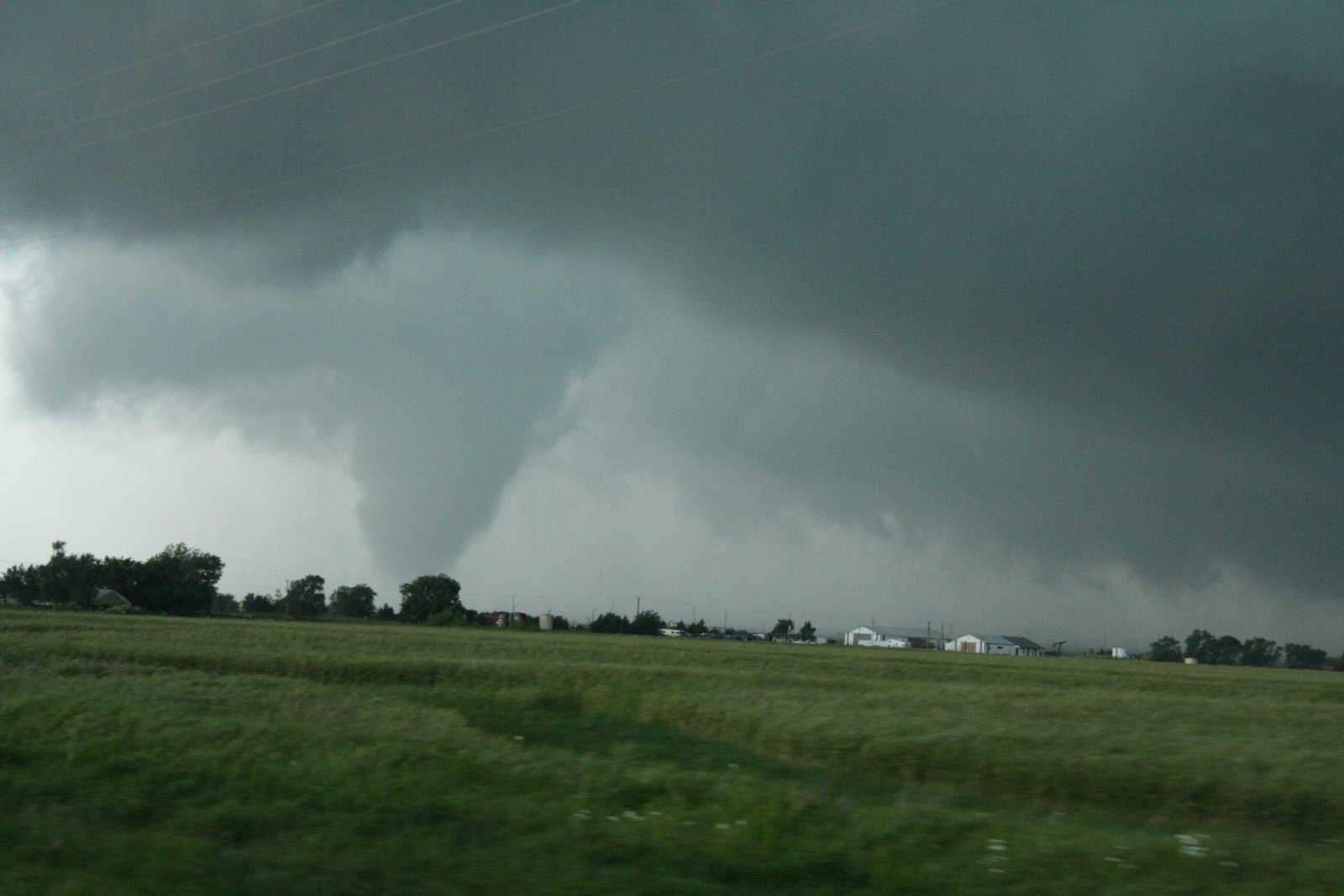
The peak of tornado season in Kansas
The peak time for tornado season may vary from year to year. However, historical data shows us that April through June typically produce more than enough funnel clouds for everyone in Kansas – along with a few extras to send over the border into Missouri. These three months are when we’ll be tracking every storm that even thinks about forming. So if you see any of our meteorologists out on the side of the road looking up and muttering to themselves, just know that they’re hard at work making sure no one has to call their insurance company come tomorrow morning.
Tornadoes and Kansas, they couldn’t be more of a match made in heaven. Being at the heart of Tornado Alley means that when it comes to severe weather Kansas is bound to have a front row seat. To get an understanding of what it’s really like during tornado season in Kansas, you’ll need to do some digging into historical data which will show the impact this natural disaster has had over the years. During tornado season, from March to July, Kansas has seen an alarming number of them.
Historical data on tornadoes during tornado season in Kansas
One year that stands out is 2011 when on April 14th an unprecedented outbreak occurred. There were 22 separate tornados that day all touching down in different parts throughout the state making it one of the most active days for tornadoes ever recorded in Kansas. Some of these twisters even got up to EF-3 levels which heavily damaged Sturges-Young Airport near Wellington. These records are just another reminder that nobody knows what can happen during a tornado season.
Looking at each month individually you’ll notice interesting patterns within each one. A big one is May where there’s typically a massive surge in activity across the state, with historically higher numbers compared to other months in terms of both frequency and intensity. This information is enough evidence for residents and storm enthusiasts alike to take any precautions necessary as they brace themselves through storm shelters and evacuation plans during this time frame. Meteorologists are then able to use this information along with live weather observations so they can better predict when these tornado threats will be at its peak and notify everyone preparing them for life-threatening situations if possible
What are the risks and damages associated with tornadoes in Kansas?
Bursting with a startling 90 tornadoes on average each year, Kansas sits right in the middle of Tornado Alley. Some reports even claim that it is the country’s most twister-prone state. In fact, many Kansans take pride in their relationship with nature’s most violent storm system.
“There’s an old saying,” says Harold Brooks, a meteorologist at NOAA’s National Severe Storms Laboratory in Norman, Okla., “that people from Oklahoma and Texas talk about how great their weather is — but they vacation in Colorado. People from Kansas say they don’t have mountains to go to so they’re stuck with their weather.”
That bad weather, however, can be quite destructive. There are several factors that make the Sunflower State particularly susceptible to tornadoes. For one thing, air flowing off the Rocky Mountains and down into the plains often clashes with warm moist gusts wafting up from the Gulf of Mexico — ideal conditions for tornado formation.
And because much of Kansas is flat farmland or sparsely populated grassland, there are few obstacles to block or slow those winds once they start swirling around near the ground.
Researchers still have much to learn about how tornados form and why some storms produce them while others do not. But years of monitoring has taught them a fair amount about which parts of Kansas see more tornadoes than others.
The riskiest place is south-central Kansas — particularly Wichita and surrounding Sedgwick County — where residents might expect two or three twisters per decade passing within 5 miles (8 kilometers) of home.
By contrast, people living in northwestern counties such as Sherman and Cheyenne should see only one such event over three decades on average.
What nobody really knows yet is why some parts of the state are more prone than others.
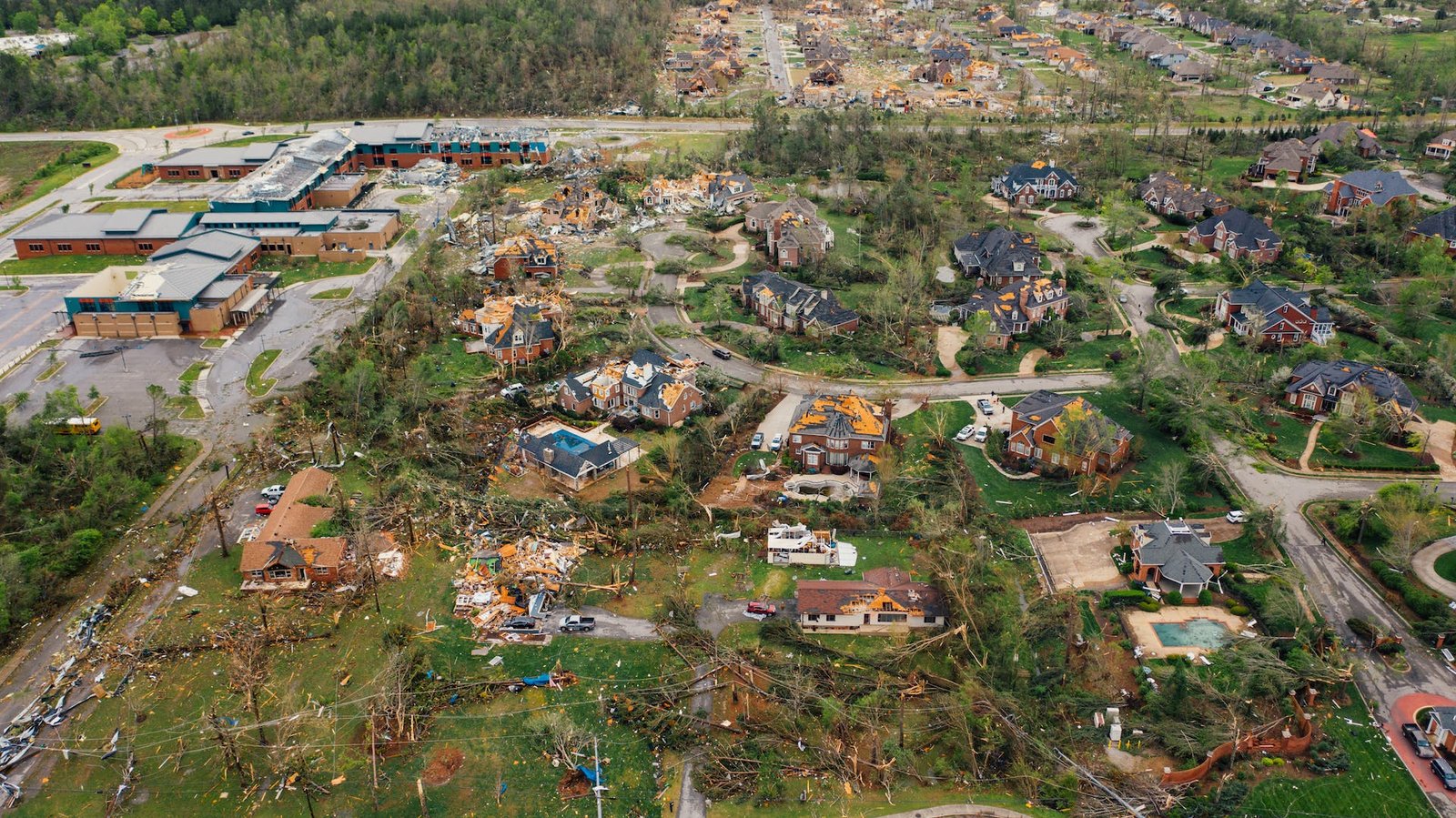
Understanding the potential damage caused by tornadoes in Kansas
In Kansas, one state located right smack in the middle of Tornado Alley, these suckers come often and they come hard. Every year, we get an average of 90 twisters tearing shit up across the state. According to the National Oceanic and Atmospheric Administration (NOAA), it shows that April through June is when they’re most likely to hit.
It’s not just a little wind either. These things are crazy powerful with some gusts reaching over 200 miles per hour. In seconds they can blow down buildings like it was made outta cardboard. The Greensburg EF5 tornado in 2007 even destroyed almost all the buildings in the town.
These things don’t just destroy property though, they kill people too. Despite having better technology now than ever before with Doppler radar and other forecasting tools, there’s still always a chance people may not be prepared or get enough warning to take cover.
Knowing how destructive these freaky funnels are is crucial for Kansans. So if you live here, make sure you have a plan and an emergency kit ready because you never know when shit might hit the fan… literally.
The impact of tornadoes on different parts of Kansas
Understanding the damage of a tornado isn’t easy, especially when they hit in different parts of the state. Over the years, Kansas has seen its fair share of them, and it’s never been an easy time for those affected. Tornadoes of all shapes and sizes have left their mark on this exact landscape—taking away people’s homes, memories and even lives. On May 4th, 2007; however, a deadly EF5 tornado with over 200 mph winds tore through Greensburg. The disaster took everyone by surprise for this small town as they suffered through nearly 95% destruction on structures alone. There were also twelve reported deaths.
It was heartbreaking to hear about what happened to this small town, but it wasn’t the first or last time that such an incident would occur in Kansas history. Other towns like Udall and Blackwell were also struck on May 25th, 1955 and experienced similar pain while dealing with significant damages and loss of life. Tornadoes are not picky about where they touch down within our borders — meaning there is always a chance one could hit near you at any given moment during season. That level of unpredictability only adds to the fear that Kansans feel in these months leading up to summer as we all hope for the best but prepare for the worst.
The Enhanced Fujita Scale and tornado damage assessment
The national oceanic and atmospheric administration has developed the Enhanced Fujita Scale (EF-Scale) to assess tornado damage with greater accuracy. This scale takes into account not only the wind speed of a tornado, but also the nature of the structures impacted by it. By analyzing factors such as building type, construction quality, and degree of damage, meteorologists can determine the intensity of a tornado more precisely.
This enhanced scale has revolutionized our understanding of tornadoes and their impact on communities. It provides emergency responders and researchers with valuable information for assessing structural vulnerabilities in different areas. With this knowledge, mitigation efforts can be targeted accordingly to minimize future damage and improve overall disaster preparedness.
By utilizing the EF-Scale, we gain insight into how specific buildings or infrastructure withstand different levels of tornadic force. For example, if an EF5 tornado caused minimal damage to a well-constructed concrete building while completely destroying nearby wooden structures classified as lower-intensity EF4 damage, this data would prompt investigation into construction practices that better protect against extreme winds. Such knowledge is vital for architects and engineers when designing buildings in tornado-prone areas.
As we delve deeper into understanding tornado damage assessment through tools like the EF-Scale, strides are being made toward predicting long-term effects beyond immediate physical destruction. Researchers are studying psychological impacts on survivors which could range from post-traumatic stress disorder (PTSD) to changes in resilience mindset during rebuilding stages.
See Also: What is the Fujita Scale for tornadoes? Wind Speed Scale
How to stay safe during tornado season in Kansas?
Kansas averages about 96 twisters yearly. Tornado season is serious. You need to get ready and learn about staying safe.
First: Make a plan with your family. Pick a shelter spot like a basement or storm cellar. Practice going there regularly. Everyone should know what to do if a tornado comes.
Secondly, watch the weather reports closely. Understand “watches” mean conditions could produce tornadoes. “Warnings” mean one was spotted or seen on radar. You must act quickly when warned.
Don’t just depend on outdoor sirens. These may not be heard indoors or far away. Get weather updates other ways, like radio or phone apps. These warn you immediately.
Follow these tips for tornado season in Kansas. Being informed and having a solid plan are vital. Planning ahead keeps you safer!
See Also: How Fast Do Tornadoes Spin? Wind Speed and Severe Weather
Tornado safety tips for residents of Kansas
Residents of Kansas understand the threat of tornadoes all too well. As tornado season intensifies, being prepared with life-saving safety tips is crucial. The National Weather Service offers valuable insights:
1. Take shelter in a basement or interior room on the lowest floor. If no basement’s available, a small, windowless room like a bathroom or closet will suffice.
2. Have protective measures ready – helmets for minimizing head injuries, sturdy shoes to guard against debris.
3. Steer clear of windows; powerful winds can shatter glass, turning shards into dangerous projectiles.
4. Caught outdoors with no shelter? Lie flat in a ditch or low area, covering your head with your hands.
5. Stay informed via reliable local news or weather apps sending real-time severe weather alerts, enabling immediate action.
While not exhaustive, these guidelines are vital for keeping Kansans safe when nature’s fiercest storms strike. Stay vigilant; your safety is paramount when facing tornadoes!
The role of storm shelters in tornado safety
Storm shelters play a major role in keeping people safe during tornadoes. In Tornado Alley, like Kansas, tornadoes are very common at certain times of year. It’s crucial for people living there to be prepared and have a plan ready when severe weather strikes.
Storm shelters protect people and families from the intense winds and flying debris of tornadoes. Built to withstand high winds, they provide a safe place during violent storms. Having this designated shelter gives peace of mind – even if a tornado hits nearby, there’s a sturdy, protected spot to take cover.
Besides physical safety, storm shelters offer relief from fear during severe weather. Having a secure place to go when storms approach reduces the anxiety and worry from tornado threats. Instead of panicking about safety, people can stay calm and follow emergency plans.
In tornado-prone areas like Kansas, storm shelters are vital for tornado safety. They shelter people from harm and ease minds during storms. Communities in these regions should ensure everyone can access storm shelters – this could save lives and limit the devastation tornadoes cause.
The importance of staying informed through tornado warnings and watches
In Kansas, tornado season brings a real threat. Tornado warnings and watches alert you to danger. You must pay attention to stay safe. Tornadoes can happen fast with little warning time. You need to react quickly. Following alerts from experts helps protect your family. Meteorologists study the weather closely to issue accurate tornado warnings. You should take action when they warn of tornadoes in your area.
Being alert for tornadoes helps your whole community too. If everyone knows the risks, people can work together to reduce harm. Alert neighbors can help each other. Plus, knowing tornado risks affects your daily plans. You may need to adjust schedules or travel due to weather. Stay tuned to trusted sources like local weather reports. This lets you make smart choices to stay safe in bad storms.
Never ignore tornado watches and warnings. They exist to give advance notice of life-threatening tornado conditions. In today’s world, we are lucky to get weather information so quickly. Using these modern alerts properly could save your life when severe storms strike. Staying informed is crucial for tornado preparedness and safety in Kansas.
Conclusion
Tornadoes can happen in Kansas anytime. But spring months like April and May are riskier. Still, June also sees twisters sometimes. Past events remind us of tornado danger. We shouldn’t let our guard down when June starts. We must stay alert and prepared for severe weather.
Kansas saw very bad June tornadoes before. On June 1, 1955, an extremely powerful F5 tornado hit Udall town. It killed 80 people and injured many others. This tragic event shows no month is fully safe from twisters. Tornado season requires utmost caution.
To stay safe during tornado season, stay updated on weather. Listen to warnings from authorities. Have an emergency plan ready for your family. Preparation is key against nature’s fury. When tornadoes strike, being alert and following safety steps saves lives. Stay vigilant always!

